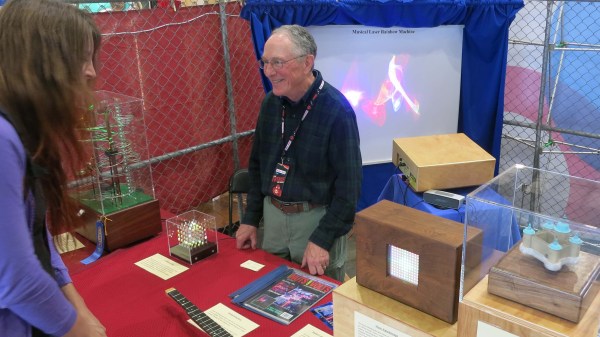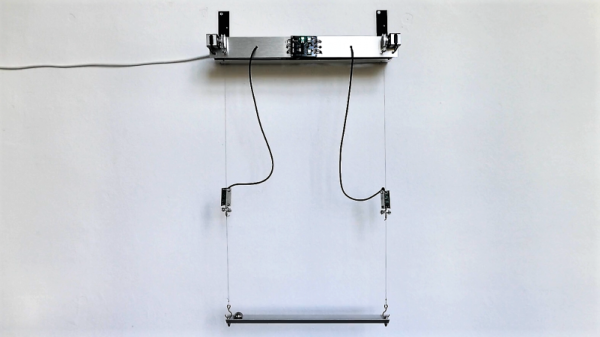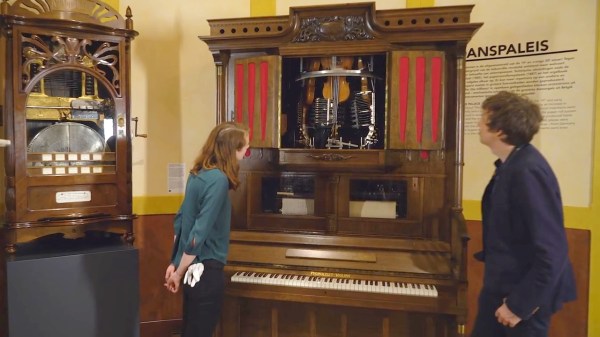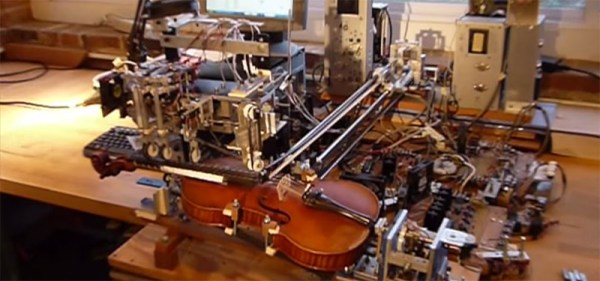This booth was easy to miss at Maker Faire Bay Area 2019 amidst tall professional conference signage erected by adjacent exhibitors. It showcased the work of [Dr. Victor Chaney] who enjoys his day job as a dentist and thus feels no desire to commercialize his inventions — he’s building fun projects for the sake of personal enjoyment which he simply calls Vic’s Creations. Each project is built to his own standards, which are evidently quite high judging by the perfect glossy finish on every custom wood enclosure.
Some of these creations were aligned with his musical interests. The Backpacking Banjo was built around a (well cleaned) cat food can to satisfy the desire for a lightweight instrument he can take camping. His Musical Laser Rainbow Machine (fully documented in Nuts & Volts) was created so little bands formed by independent artists like himself can have a visual light show to go with their live performances. The Music Kaleidoscope is another execution along similar lines, with an LED array whose colors are dictated by music. Venturing outside the world of music, we see a magnetically levitated Castle In The Clouds which also receives power wirelessly to illuminate LEDs
The largest and most complex work on display is an epic electromechanical masterpiece. Par One is a rolling ball sculpture featuring the most convoluted golf course ever. Several more rolling ball sculptures (also called marble machines or marble runs) are on display at Dr. Chaney’s office which must make it the coolest dentist’s lobby ever. The lifelike motions he was able to get from the automatons he built into the sculpture are breathtaking, as you can see below.
Continue reading “Exquisite Craftsmanship Elevate Vic’s Creations Above The Rest”
























